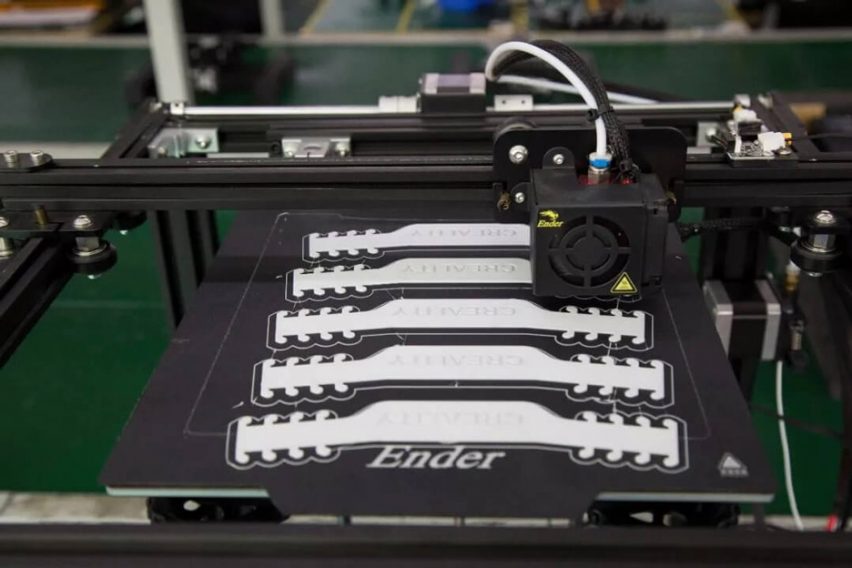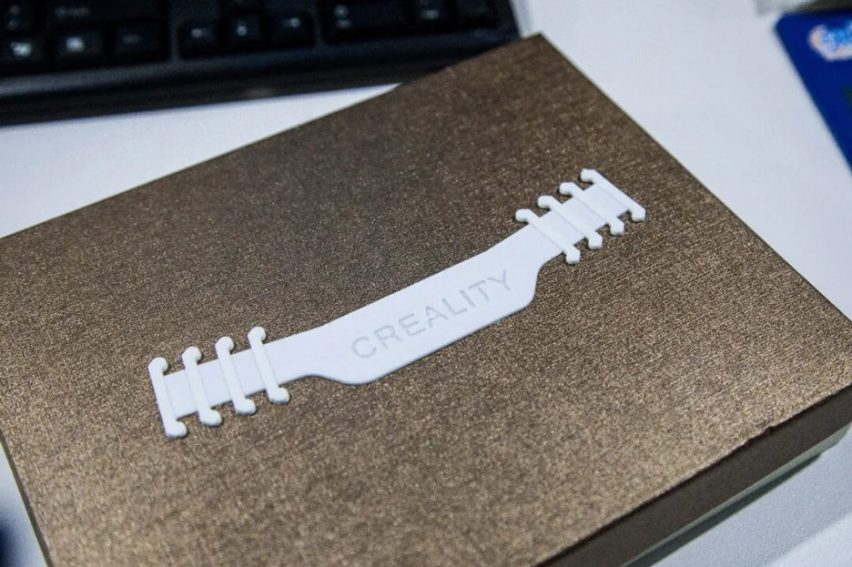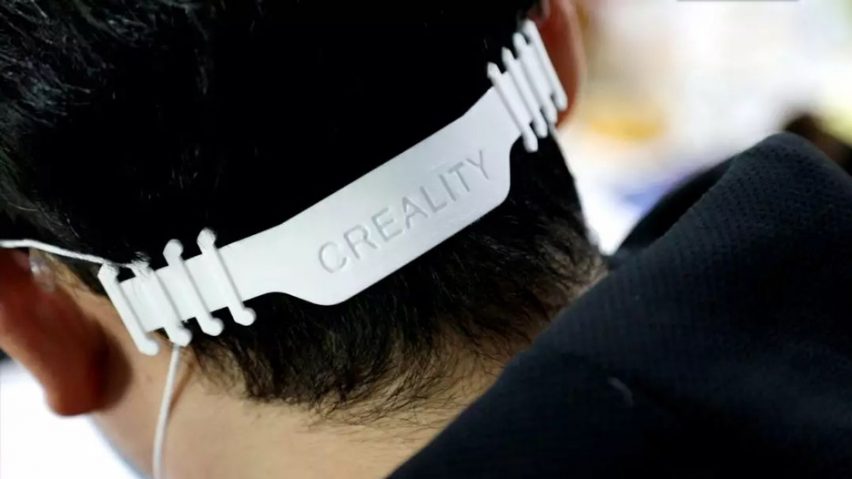Creality's 3D-printed buckle makes wearing face masks more comfortable
Chinese 3D-printer manufacturer Creality is fabricating thousands of buckles that make face masks less painful to wear for medical workers treating coronavirus patients.
Small bars on either side of the plastic buckle hold the elastic taut behind the mask-wearer's head, so that it doesn't put painful pressure on their ears.
Face masks are a key part of protecting front line medical workers from contracting coronavirus, but wearing Personal Protective Equipment (PPE) for an extended period of time can be very uncomfortable for the wearer.

"Seeing that doctors and nurses in the reports were suffering great physical pain on face and ears caused by face masks, I started thinking about what could help them relieve some discomfort," said Creality senior designer Guoliang Ji.
"By taking advantage of the 3D printing that I am good at, I want to offer medics some help."
Ji looked at handles on packaging to create the simple buckle design. Five buckles can be printed at one go in an hour on a Creality Ender-3 3D printer.
Creality, which is based in Shenzhen, has been printing the buckles to donate to hospitals in China, and has encouraged people with 3D printers to do the same at home.
They began printing the buckles on 21 February 2020, when the disease had spread rapidly within China and cases had been discovered in 28 other countries. Viral pictures had circulated of Chinese medical workers with cuts on their faces from long shifts wearing masks, goggles and other protective gear.

Each day, 100 of Creality's 3D printers run for 10 hours, manufacturing 1,600 masks. By 4th March 2020, 7,800 buckles had been given to two hospitals and other organisations and families in Shenzhen, and another 2,000 pieces donated to four hospitals in Wuhan.
Now that China has contained its coronavirus outbreak, factories and design studios are beginning to re-open.

Creality has made the buckle design free to download, so that anyone with a suitable 3D printer can print buckles to use or donate.
3D printing has allowed companies to quickly fill manufacturing gaps when countries are struggling to keep up with demand for medical equipment.
In Italy crucial valves for ventilators have been reverse engineered and made by startup Issinova, while Spain, 3D printing company Nagami Design has switched from making furniture to using their robotic arm for manufacturing face shields for hospital workers.
Architectural designers have created a 3D-printed door handle that lets people open doors with their arms rather than their hands to help stop the spread of the virus.